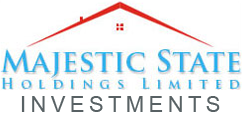Effective scientific disciplines communication is essential for connecting the gap between the sophisticated world of scientific research plus the general public’s understanding and also appreciation of science. In the present increasingly complex and interconnected world, the ability to communicate medical concepts, findings, and effects accurately and accessibly is usually paramount. However , despite the significance of science communication, there stays a significant disparity between the terminology of science and the degree of understanding among the public. To address this gap, scientists, tutors, communicators, and policymakers ought to work together to develop innovative methods and approaches that accomplish meaningful engagement with technology and foster a more medically literate society.
One of the primary difficulties in science communication is a inherent complexity of technological concepts and terminology. Technology is often perceived as inaccessible in addition to intimidating, with its jargon-laden dialect and abstract concepts posing barriers to comprehension for several members of the public. To overcome these barriers, scientific research communicators must strive to convert complex scientific information into clear, concise, and engaging words that resonates with different audiences. By using analogies, metaphors, and real-world examples, communicators can make scientific concepts a lot more relatable and understandable, which allows broader participation and diamond with science.
Moreover, successful science communication requires recognizing and addressing the different needs, interests, and perspectives of different audience groups. Its not all members of the public have the same level of scientific literacy as well as background knowledge, and communication strategies must be tailored to focus on diverse audiences. By employing target audience segmentation techniques and visitors analysis tools, communicators can certainly identify the unique characteristics along with preferences of target people and develop targeted messaging and content that resonates with their interests and principles.
Furthermore, science communication endeavours must prioritize building believe in and credibility with the community by fostering transparency, openness, and integrity in research research and communication routines. In an era of untrue stories and skepticism, it is essential with regard to scientists and communicators in order to communicate openly and honestly about the uncertainties, limitations, as well as ethical considerations associated with methodical research. By engaging in clear and two-way communication with all the public, scientists can make trust and credibility, pass misconceptions, and foster any culture of evidence-based decision-making and critical thinking.
Together with fostering trust, effective science communication requires recognizing and addressing the cultural, societal, and political factors this influence public perceptions regarding science. Science is not value-neutral, and societal attitudes, thinking, and ideologies can appearance public understanding and approval of scientific findings and recommendations. Communicators must be very sensitive to the cultural and societal contexts in which scientific info is received and take into account how factors such as religious beliefs, ideology, and identity could influence public attitudes and also perceptions of science. Simply by acknowledging and respecting different perspectives, communicators can foster dialogue, build consensus, and also promote informed decision-making on science-related issues.
Moreover, science communication efforts must https://the016.com/classifieds/17952/3001/history-of-admission-to-college influence a variety of communication channels along with platforms to reach diverse audiences and maximize impact. Together with traditional media outlets like newspapers, television, and radio, communicators can utilize a digital and social media platforms, pod-casts, blogs, and citizen research initiatives to disseminate research information and engage with the community. Interactive and participatory treatments, such as science festivals, community lectures, and community forums, present opportunities for direct diamond and dialogue between analysts and the public, fostering greater comprehension and appreciation of scientific disciplines.
Furthermore, science communication ought to be viewed as a collaborative as well as iterative process that involves continuous dialogue, feedback, and assessment. Scientists, educators, communicators, as well as policymakers must work together to co-create and co-deliver scientific research communication initiatives that match the needs and interests connected with diverse audiences. By taking feedback from the public, evaluating the effectiveness of communication efforts, and also continuously refining and increasing communication strategies, stakeholders are able to promise you that that science communication remains to be relevant, impactful, and tuned in to the evolving needs and also priorities of society.
In conclusion, effective science communication is crucial for bridging the space between ‘because science’ and public understanding and admiration of science. By converting complex scientific information directly into clear, accessible language, adding appeal to communication strategies to meet the needs of diverse audiences, fostering trust along with credibility, acknowledging cultural along with social factors, leveraging a variety of communication channels and systems, and embracing collaboration and also feedback, communicators can allow the public with the knowledge and also understanding needed to make educated decisions and engage meaningfully along with science. Through these endeavours, we can build a more technically literate and informed community that recognizes the value and also relevance of science in addressing the challenges as well as opportunities of the 21st hundred years.


